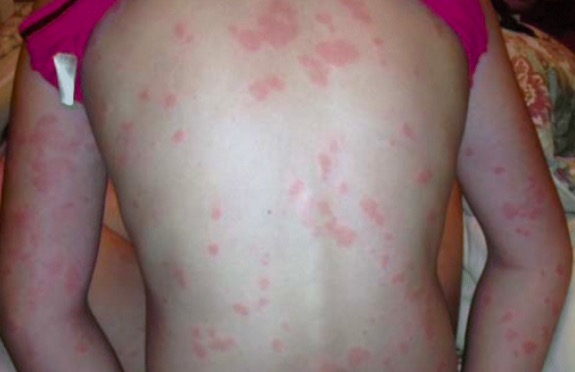Playlist
Show Playlist
Hide Playlist
Diagnostics in Dermatology: Blood and Allergy Tests
-
Slides Diagnostics in Dermatology Blood and Allergy Tests.pdf
-
Download Lecture Overview
00:01 We do blood tests in dermatology as well, and we do the following blood tests for various medical conditions. 00:08 As you can see from renal thyroid disorders, connective tissue disorders, as well as markers to monitor systemic drugs. 00:18 The allergy tests are also done in dermatology, and the one of the allergy tests that we do is a prick test. 00:26 It's not very useful for investigation of skin diseases, but sometimes we use it for patients where we suspect contact educator or latex allergy. 00:35 Latex we find in gloves. 00:38 The second one is a patch test. 00:40 You can see there are lots of patches of patches there with allergens. 00:43 And this is used to confirm substances that can cause allergic contact dermatitis. 00:49 For example, on your buckle of your belt you've got nickel. 00:54 If you wear cheap jewelry there's nickel there. 00:56 So some people will have eczema around the ear. 00:59 So we can actually do a patch test to see whether you are allergic to nickel. 01:04 And we use appropriately diluted allergens that are applied to the skin. 01:10 Usually we do on the back, but if you have lots of allergens we use the back and we can use the thighs. But you make sure that there's no hair if you have to use it on the chest. This is a picture showing the patches which are put in there and left for 48 hours. 01:25 And after that we read the reaction. 01:27 So the results are read at 96 hours. 01:30 And they usually the reaction takes 48 to 96 hours.
About the Lecture
The lecture Diagnostics in Dermatology: Blood and Allergy Tests by Ncoza Dlova is from the course Introduction to Dermatology.
Included Quiz Questions
After how many hours post-exposure are patch test results typically read?
- 96 hours
- 24 hours
- 128 hours
- 1 week
- 2 weeks
Customer reviews
5,0 of 5 stars
| 5 Stars |
|
5 |
| 4 Stars |
|
0 |
| 3 Stars |
|
0 |
| 2 Stars |
|
0 |
| 1 Star |
|
0 |




